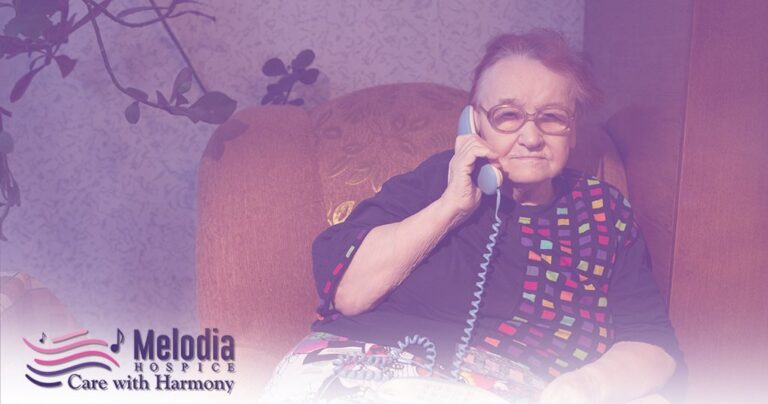Hospice Care At Home In Town of Danville, California
In the face of a terminal condition, many people put off seeking specialized medical care. Many people with a terminal illness may nevertheless manage on their own for the first few months or even weeks after being diagnosed, even with only the most basic of hospice care from doctors, nurses, and mental health counsellors.
However, as the terminal illness worsens, greater support is generally required in order to maintain a high quality of life for the patient. Conversation starters for bringing up the subject of hospice care with a loved one who has been diagnosed with a terminal disease.
How Do You Begin A Conversation with A Family Member About Hospice?

The Conversation Project has put together a free and comprehensive guide on how to bring up the subject of medical care for loved ones who are suffering from terminal illnesses with family members and friends. In particular, this is beneficial since it helps you break down discussion topics based on the terrible condition that your loved one is suffering from. The following are some great discussion starters to use in order to introduce hospice care to a loved one in addition to that helpful resource:
Explain How Hospice Care Has Benefitted Someone You Know

One of the most effective methods to bring up hospice care with a loved one who has been diagnosed with a terminal illness is to share a real-life story that illustrates how helpful it can be for increasing quality of life for both the patient and the caregiver. In particular, if you know someone who has gone through hospice care or is now undergoing hospice care, this information can be quite beneficial. If this is the case, you can look for successful testimonies online or by calling a local hospice provider for assistance.
Ask Your Loved One How They Feel Physically and Mentally

Another excellent technique to bring up the subject of hospice care with your loved one is to begin by asking them how they are feeling physically and mentally. Patients’ overall well-being is taken into consideration when providing hospice care, which includes ensuring that their physical, emotional and spiritual requirements are satisfied. If your loved one expresses any concerns about their health or overall well-being, you can use this as an opportunity to explain how you believe hospice care can help him or her. In the event that they are feeling well, you can still move on to discussing any future requirements they may have as a result of their sickness.
Getting Hospice Care

Hospice care is provided through a hospice service. As the patient’s primary caregiver, a hospice team will provide care and support around the clock, seven days a week, in conjunction with the patient’s primary caregiver (usually a family member).
The Primary Caregiver

Hospice patients are required to designate a primary caregiver when they enroll in the program. Typically, this is a member of the immediate family or a close friend. As the patient’s primary caregiver, you work together with the hospice staff and the patient to develop a personalized care plan that meets your specific requirements. The primary caregiver is the patient’s primary decision-maker throughout the course of hospice care.
The majority of the patient’s physical care is provided by a primary caregiver, who also assists in keeping track of symptoms and other difficulties. As a primary caregiver, you are responsible for interacting with the hospice team and scheduling caregivers in the home as needed.
Members of the hospice care team may include a patient’s primary caregiver if they are receiving hospice care away from home. Patients’ needs and decisions are better communicated when the primary caregiver is present at team meetings.
The patient must comply with the hospice team member who arrives first to discuss services if no family members are present to take on the role of primary caregiver. In addition, they’ll have to get in touch with their insurer. Care settings may or may not be available depending on insurance coverage and the types of hospice organizations or programs that are available.
The Hospice Teams

Hospice care is typically overseen by a diverse team of healthcare professionals. Many health care experts are involved in helping to manage the patient’s care, based on their needs and preferences.
Although the cancer doctor and/or primary care doctor may also be involved in the patient’s treatment, the hospice doctor or medical director is usually in control of the therapy. Treatment decisions are supported by a team of health care professionals that includes doctors and nurses as well as social workers as well as nutrition and home health aides and pastors and therapists.
All of the patient’s demands will be taken into consideration when the patient’s status is assessed on a regular basis and family and care team meetings are scheduled. Symptom relief is the primary goal of palliative care, but it often includes social, emotional, and spiritual support as well.
Hospice nurses make regular house calls and visits to patients receiving home hospice care. All the time, every day of the week. Other members of the hospice team may make a visit depending on the patient’s requirements and insurance coverage. It’s possible to provide round-the-clock hospice care in a facility other than the patient’s home, depending on the patient’s specific circumstances and insurance coverage.
In hospice care, the workers are empathetic and compassionate. In the terminal phases of an advanced illness, they have great communication skills and listen effectively. To help them cope with the job’s emotional responsibilities, they are frequently taught in the challenges associated with death and dying and given ongoing education and support.
Volunteers in hospices play a critical role. Personnel care and hospice office assistance are two examples of volunteer opportunities. They can be medical professionals or members of the general public.
Place To Receive Hospice Care

For the most part, hospice patients get their final care in the comfort of their own homes. Additionally, hospice care can be provided by independent or free-standing hospice facilities, as well as programs formed in hospitals, nursing homes, assisted-living facilities, or other health-care systems Several hospices offer both in-home and in-patient care.
Hospice care can be provided anywhere, at any time, seven days a week, 24 hours a day. Choosing the best hospice program for you and your family can be made easier with the help of your doctor, hospital social worker, case manager, or discharge planner.
Home Hospice Care

The vast majority of hospice patients are cared for in their own homes. Residential institutions, several types of assisted living, and nursing homes can all benefit from hospice care. Hospice care may be referred to as in-home care if a patient lives in one of these facilities and requires it. This is an area where health insurance policies may differ.
Most hospice programs offer in-home hospice care. There are many professionals that work in home hospice programs but the primary caregiver is generally a close family member or friend who takes on the role of 24-hour caretaker. In-home care providers spend most of their time with patients and are prepared to provide a significant amount of direct care.
A primary caregiver is still required for care provided in another facility, even if personnel may help with some physical care depending on the type of facility and hospice insurance coverage.
Understanding that home hospice may necessitate someone being at the patient’s home seven days a week, round the clock, is critical. For people who live alone or with a full-time partner or adult children, this may be a challenge. However, in most cases, a well-organized schedule and the cooperation of friends and family members may address this problem. On a frequent basis, hospice professionals will check in with the patient, their family, and their caregivers. They’ll take care of any symptoms and provide any essential therapy and services to keep them under control.
Inpatient Hospices And Free-Standing Or Independent Hospices

Many communities have in-patient hospice facilities. An in-home hospice service may also administer these programs. Alternatively, they can be privately owned hospices that offer either in-home or out-of-home care. The free-standing hospice is a good option for patients who don’t have caregivers at home or who require round-the-clock physical care. Respite care can be provided by some inpatient hospice centers (temporary care when the primary caregiver is unavailable).
Ask Your Loved One About Their Preferences for End-Of-Life Care

Keeping in mind your loved one’s preferences as they progress through the stages of their disease is critical. One of the most difficult conversations to have, but also one of the most crucial, is with a loved one about their preferences for end-of-life care and services. Discuss their objectives with them, and if appropriate, inform them about how hospice care might assist them in achieving their objectives and living the lives they desire. For example, if your loved one expresses a wish to spend more time with family, explain to them how hospice care relieves loved ones of the obligation of assisting totally with activities of daily living (ADLs), allowing them to spend more meaningful time with family members.
When Is The Right Time To Bring Up Hospice Care?

Introducing hospice care to a loved one who has been diagnosed with a terminal disease is something you should seriously think about. Your loved one may benefit from hospice care for a variety of reasons, including but not limited to:
- It has been determined that a loved one is suffering from a severe or terminal illness.
- A physician cannot address all of the needs of a patient on his or her own.
- The quality of life suffers significantly when hospice care is not provided.
- Your loved one has been admitted to the hospital on many occasions as a result of their sickness.
- Curative care is no longer considered a viable option.
- Your loved one has expressed a desire to forego curative treatment.
After having the talk with your loved one regarding hospice care, you can book a meeting with a hospice care provider (such as Melodia Care Hospice) to review your options in more detail.
Palliative Care Vs. Hospice Care: Which Is The Right Solution?

The primary goal of hospice care is to improve the quality of life of patients while also assisting them in preparing for the later phases of their lives and their death if they so choose. When considering hospice care, it is crucial to remember that it is intended for patients who have been diagnosed with a terminal illness, particularly those who are not anticipated to live for more than six months.
Patients with life-limiting illnesses benefit from palliative care, which is comparable to hospice care in that it improves their overall quality of life as well as their functional capacities. Patients in palliative care, on the other hand, frequently seek curative treatment because their illness is not regarded to be fatal.
Start The Hospice Care Process With A Quick Phone Call

After a terminal illness diagnosis, hospice care is a technique to improve the quality of life. Call Melodia Care Hospice today to learn more about the advantages of hospice care and to decide if it is best for you. Please don’t hesitate to contact us with any questions you may have about hospice care.
You can reach us at any time of day or night by contacting us through our 24/7 online customer support chat or by calling 1-888 635-6347 (MELODI-7).
